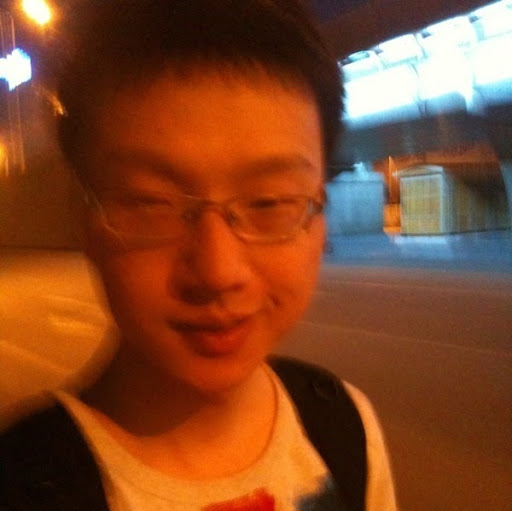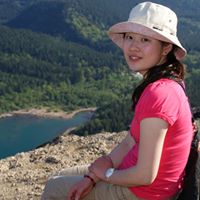Jie Chen
age ~62
from Jersey City, NJ
- Also known as:
-
- Chen Jie
Jie Chen Phones & Addresses
- Jersey City, NJ
- 25417 38Th Ave, Little Neck, NY 11363 • 7182292873
- Flushing, NY
- Monterey Park, CA
- New York City, NY
- Queens, NY
Us Patents
-
Determining Leading Indicators
view source -
US Patent:8423454, Apr 16, 2013
-
Filed:Jan 6, 2012
-
Appl. No.:13/344709
-
Inventors:Jie Chen - Chappaqua NY, US
Timothy John Breault - Huntersville NC, US
Fernando Cela Diaz - New York NY, US
William Anthony Nobili - Charlotte NC, US
Sandi Setiawan - Charlottle NC, US
Harsh Singhal - Charlotte NC, US
Agus Sudjianto - Charlotte NC, US
Andrea Renee Turner - Rock Hill SC, US
Bradford Timothy Winkelman - Wilmington DE, US -
Assignee:Bank of America Corporation - Charlotte NC
-
International Classification:G06Q 40/00
-
US Classification:705 38
-
Abstract:Embodiments of the present invention relate to methods and apparatuses for determining leading indicators and/or for modeling one or more time series. For example, in some embodiments, a method is provided that includes: (a) receiving first data indicating the value of a total income amount for a plurality of consumers over a period of time; (b) receiving second data indicating the value of a total debt amount for a plurality of consumers over a period of time; (c) selecting a consumer leverage time series that compares the total income amount to the total debt amount over a period of time; (d) modeling the consumer leverage time series based at least partially on the first and second data; (e) determining, using a processor, the value of the cycle component for a particular time; and (f) outputting an indication of the value of the cycle component for the particular time.
-
Densifying A Mobility Network By Siting Antennas With Demand Zone Planning, In A Communications Network
view source -
US Patent:20210377903, Dec 2, 2021
-
Filed:Jun 2, 2020
-
Appl. No.:16/890493
-
Inventors:- Atlanta GA, US
Jie Chen - Watchung NJ, US
Wenjie Zhao - Princeton NJ, US -
International Classification:H04W 64/00
H04W 16/14
H04W 4/029
H04W 24/02
H04L 12/24
H04W 16/18 -
Abstract:The technologies described herein are generally directed to facilitating operation of a system for implementing fifth generation (5G) or other next generation networks. In accordance with one or more embodiments, a method described herein can include identifying, by a device comprising a processor, predicted resource usage of a first antenna covering a geographic zone. Further, the method can include selecting, by the device, a group of geographic siting locations within the geographic zone for potentially siting ones of a group of second antennas. In addition, selecting, by the device, a spatial arrangement in relation to the first antenna, of a subset of the group of geographic siting locations can occur, with a selected spatial arrangement including an arrangement to maintain the predicted resource usage in the condition.
-
Action Recognition With High-Order Interaction Through Spatial-Temporal Object Tracking
view source -
US Patent:20210081673, Mar 18, 2021
-
Filed:Sep 9, 2020
-
Appl. No.:17/016260
-
Inventors:- Princeton NJ, US
Asim KADAV - Jersey City NJ, US
Jie CHEN - Bellevue WA, US -
Assignee:NEC LABORATORIES AMERICA, INC - Princeton NJ
-
International Classification:G06K 9/00
-
Abstract:Aspects of the present disclosure describe systems, methods, and structures that provide action recognition with high-order interaction with spatio-temporal object tracking. Image and object features are organized into into tracks, which advantageously facilitates many possible learnable embeddings and intra/inter-track interaction(s). Operationally, our systems, method, and structures according to the present disclosure employ an efficient high-order interaction model to learn embeddings and intra/inter object track interaction across the space and time for AR. Each frame is detected by an object detector to locate visual objects. Those objects are linked through time to form object tracks. The object tracks are then organized and combined with the embeddings as the input to our model. The model is trained to generate representative embeddings and discriminative video features through high-order interaction which is formulated as an efficient matrix operation without iterative processing delay.
-
Forecasting And Managing Daily Electrical Maximum Demands
view source -
US Patent:20190251484, Aug 15, 2019
-
Filed:Feb 11, 2019
-
Appl. No.:16/272759
-
Inventors:- Indianapolis IN, US
Amin Amini - Irvine CA, US
Jie Chen - Carmel IN, US -
International Classification:G06Q 10/04
G06F 1/3203
G06F 9/30
H02J 3/14 -
Abstract:Systems and methods are provided for forecasting and managing daily electrical demands. In some embodiments, a computing platform may receive historical demand data corresponding to historical electrical demand over a first period of time. Next, the computing platform may determine a reference rate of change (ROC) and a statistical mode corresponding to a number of positive ROCs. After, the computing platform may receive current demand data corresponding to current electrical demand over a second period of time. Subsequently, the computing platform may determine an alarm condition corresponding to a daily peak electrical demand. Following, the computing platform may generate one or more commands directing a second computing platform to display the alarm condition. Afterwards, the computing platform may transmit the one or more commands directing the second computing platform to display the alarm condition.
-
Time Distance Of Arrival Based Mobile Device Location Detection With Disturbance Scrutiny
view source -
US Patent:20180227876, Aug 9, 2018
-
Filed:Apr 5, 2018
-
Appl. No.:15/946163
-
Inventors:- Atlanta GA, US
Jie Chen - Watchung NJ, US
Sam Houston Parker - Cranbury NJ, US
Huahui Wang - Bridgewater NJ, US
Wenjie Zhao - Princeton NJ, US -
International Classification:H04W 64/00
G01S 5/10 -
Abstract:Techniques for locating a mobile device using a time distance of arrival (TDOA) method with disturbance scrutiny are provided. In an aspect, for respective combinations of three base station devices of a number of base station devices greater than or equal to three, intersections in hyperbolic curves, generated using a closed form function with input values based on differences of distances from the device to pairs of base station devices of the respective combinations of three base station devices, are determined. The intersection points are then tested for robustness against measurement errors associated with the input values and a subset of the intersection points that are associated with a degree of resistance to the measurement errors are selected to estimate a location of the device.
-
Time Distance Of Arrival Based Mobile Device Location Detection With Disturbance Scrutiny
view source -
US Patent:20170079005, Mar 16, 2017
-
Filed:Nov 23, 2016
-
Appl. No.:15/359843
-
Inventors:- Atlanta GA, US
Jie Chen - Watchung NJ, US
Sam Houston Parker - Cranbury NJ, US
Huahui Wang - Bridgewater NJ, US
Wenjie Zhao - Princeton NJ, US -
International Classification:H04W 64/00
G01S 5/10 -
Abstract:Techniques for locating a mobile device using a time distance of arrival (TDOA) method with disturbance scrutiny are provided. In an aspect, for respective combinations of three base station devices of a number of base station devices greater than or equal to three, intersections in hyperbolic curves, generated using a closed form function with input values based on differences of distances from the device to pairs of base station devices of the respective combinations of three base station devices, are determined. The intersection points are then tested for robustness against measurement errors associated with the input values and a subset of the intersection points that are associated with a degree of resistance to the measurement errors are selected to estimate a location of the device.
-
Time Distance Of Arrival Based Mobile Device Location Detection With Disturbance Scrutiny
view source -
US Patent:20150148059, May 28, 2015
-
Filed:Nov 26, 2013
-
Appl. No.:14/090166
-
Inventors:- Atlanta GA, US
Jie Chen - Watchung NJ, US
Sam Houston Parker - Cranbury NJ, US
Huahui Wang - Bridgewater NJ, US
Wenjie Zhao - Princeton NJ, US -
Assignee:AT&T Intellectual Property I, L.P. - Atlanta GA
-
International Classification:H04W 64/00
-
US Classification:4554561
-
Abstract:Techniques for locating a mobile device using a time distance of arrival (TDOA) method with disturbance scrutiny are provided. In an aspect, for respective combinations of three base station devices of a number of base station devices greater than or equal to three, intersections in hyperbolic curves, generated using a closed form function with input values based on differences of distances from the device to pairs of base station devices of the respective combinations of three base station devices, are determined. The intersection points are then tested for robustness against measurement errors associated with the input values and a subset of the intersection points that are associated with a degree of resistance to the measurement errors are selected to estimate a location of the device.
Lawyers & Attorneys

Jie Chen - Lawyer
view sourceAddress:
Jun He Law Offices
85191300xx (Office)
85191300xx (Office)
Licenses:
New York - Currently registered 2005
Education:
Columbia Law School

Jie Chen - Lawyer
view sourceAddress:
Chen, Jie
7038070555 (Office)
7038070555 (Office)
Licenses:
New York - Delinquent 2002
Education:
The George Washington University

Jie Chen - Lawyer
view sourceAddress:
Volkswagen (China) Investment Company Limited
1065313067 (Office)
1065313067 (Office)
Licenses:
New York - Currently registered 2008
Education:
Columbia Law School

Jie Chen, New York NY - Lawyer
view sourceAddress:
Wade Clark & Mulcahy
111 Broadway Lbby, New York, NY 10006
111 Broadway Lbby, New York, NY 10006
Licenses:
New York - Currently registered 2001
Education:
Cornell University
Degree - BS - Bachelor of Science
Graduated - 1997
Degree - BS - Bachelor of Science
Graduated - 1997
Specialties:
Personal Injury - 20%
Construction / Development - 20%
Slip and Fall Accident - 20%
Litigation - 20%
Car / Auto Accident - 20%
Construction / Development - 20%
Slip and Fall Accident - 20%
Litigation - 20%
Car / Auto Accident - 20%
Associations:
New York State Bar Association - Member

Jie Chen - Lawyer
view sourceAddress:
Nanjing University of Finance & Economics School of Law
2552268189 (Office)
2552268189 (Office)
Licenses:
New York - Currently registered 2011
Education:
University of Connecticut School of Law

Jie Chen - Lawyer
view sourceSpecialties:
Debt Finance
Mergers and Acquisitions
Capital Markets
Corporate & Incorporation
Banking
Contracts & Agreements
Mergers and Acquisitions
Capital Markets
Corporate & Incorporation
Banking
Contracts & Agreements
ISLN:
920304141
Admitted:
2006
University:
Concord College, B.S., 1999; Concord College, B.S., 1999
Law School:
University of Michigan, J.D., 2005

Jie Chen - Lawyer
view sourceOffice:
Jun He Law Offices
ISLN:
920593330
Admitted:
1994
University:
Tongji University, Shanghai, China,, B.S.
Law School:
Columbia University School of Law, New York, New York, U.S.A.,, LL.M.; Fudan University School of Law, Shanghai, China,, LL.B.

Jie Chen
Wikipedia References

Jie Chen (Pianist)

Jie Chen (Statistician)
Resumes

Jie Chen Irvine, CA
view sourceWork:
Powerwave Technologies, Inc
Santa Ana, CA
Oct 2010 to Jun 2011
Intern Huawei Technologies Co., Ltd.
May 2006 to Jan 2008
Project Leader (Wireless Research Department) Huawei Technologies Co., Ltd.
Feb 2005 to Apr 2006
Software & Algorithm Engineer (Wireless Research Department) Huawei Technologies Co., Ltd.
Sep 2002 to Jan 2005
Software & Algorithm Engineer, Radio Network Controller (RNC) Department Huawei Technologies Co., Ltd
Shenzhen, China
Apr 2002 to Aug 2002
Software Engineer, Mobile Switching Center (MSC) Department
Santa Ana, CA
Oct 2010 to Jun 2011
Intern Huawei Technologies Co., Ltd.
May 2006 to Jan 2008
Project Leader (Wireless Research Department) Huawei Technologies Co., Ltd.
Feb 2005 to Apr 2006
Software & Algorithm Engineer (Wireless Research Department) Huawei Technologies Co., Ltd.
Sep 2002 to Jan 2005
Software & Algorithm Engineer, Radio Network Controller (RNC) Department Huawei Technologies Co., Ltd
Shenzhen, China
Apr 2002 to Aug 2002
Software Engineer, Mobile Switching Center (MSC) Department
Education:
University of California
Irvine, CA
2008 to 2015
Ph.D. in Electrical Engineering Shanghai Jiao Tong University
1999 to 2002
M.S. in Electronic Engineering Shanghai Jiao Tong University
1995 to 1999
B.S. in Electronic Engineering
Irvine, CA
2008 to 2015
Ph.D. in Electrical Engineering Shanghai Jiao Tong University
1999 to 2002
M.S. in Electronic Engineering Shanghai Jiao Tong University
1995 to 1999
B.S. in Electronic Engineering
Skills:
Experienced in C, C++, MATLAB, LaTeX

Jie Chen Brookline, MA
view sourceWork:
Edwards Wildman Palmer LLP
2009 to 2000
Associate, Business Law Department Allen & Overy LLP
New York, NY
2006 to 2009
Corporate Associate World Wildlife Fund
Washington, DC
2002 to 2003
Senior Financial Analyst
2009 to 2000
Associate, Business Law Department Allen & Overy LLP
New York, NY
2006 to 2009
Corporate Associate World Wildlife Fund
Washington, DC
2002 to 2003
Senior Financial Analyst
Education:
University of Michigan Law School
Ann Arbor, MI
2005
J.D. Concord College
Athens, WV
1999
B.S. in Finance (Sum Cum Laude)
Ann Arbor, MI
2005
J.D. Concord College
Athens, WV
1999
B.S. in Finance (Sum Cum Laude)

Jie Chen Santa Clara, CA
view sourceWork:
Center for Computational Biology and Bioinformatics, Columbia University/HHMI
New York, NY
2010 to Jul 2012
Research Associate Institute for Physical Science and Technology, University of Maryland, College Park
College Park, MD
2004 to 2010
Graduate Research Assistant Physics Department, Nanjing University, China
2002 to 2004
Research Assistant Physics Department, Nanjing University, China
2002 to 2003
Teaching Assistant
New York, NY
2010 to Jul 2012
Research Associate Institute for Physical Science and Technology, University of Maryland, College Park
College Park, MD
2004 to 2010
Graduate Research Assistant Physics Department, Nanjing University, China
2002 to 2004
Research Assistant Physics Department, Nanjing University, China
2002 to 2003
Teaching Assistant
Education:
University of Maryland
College Park, MD
2010
Ph.D. in Chemical Physics Nanjing University
2002
B.S. in Physics
College Park, MD
2010
Ph.D. in Chemical Physics Nanjing University
2002
B.S. in Physics
Skills:
Solid background in physics and math. Ten years training in chemical physics and biological physics. Proven record in theoretical and computational modeling of biological systems. Excellent skills in Brownian dynamics simulations, Monte-Carlo simulations, homology modeling, and bioinformatics. Wide range of knowledge in programming: C/C++, Fortran, Perl, and R.

Jie Chen Secaucus, NJ
view sourceWork:
Evalueserve
Sep 2011 to May 2012
Senior Business Analyst Ernst & Young LLP
New York, NY
Sep 2004 to May 2006
Internal Auditor, Business Risk Service
Sep 2011 to May 2012
Senior Business Analyst Ernst & Young LLP
New York, NY
Sep 2004 to May 2006
Internal Auditor, Business Risk Service
Education:
Carnegie Mellon University
Pittsburgh, PA
2011
ABD (All But Dissertation) in Accounting PhD program Carnegie Mellon University
Pittsburgh, PA
2008
MS in Industrial Administration Michigan State University
Lansing, MI
2004
Master in Accounting and Economics Fudan University
2000
BA in Finance
Pittsburgh, PA
2011
ABD (All But Dissertation) in Accounting PhD program Carnegie Mellon University
Pittsburgh, PA
2008
MS in Industrial Administration Michigan State University
Lansing, MI
2004
Master in Accounting and Economics Fudan University
2000
BA in Finance
Skills:
Excel, SAS, STATA, Bloomberg, TEJ, CFA Level I
Isbn (Books And Publications)

Ideology in U. S. Foreign Policy: Case Studies in U. S.-China Policy
view sourceAuthor
Jie Chen
ISBN #
0275943275

China Since the Cultural Revolution: From Totalitarianism to Authoritarianism
view sourceAuthor
Jie Chen
ISBN #
0275946479





Design of Digital Video Coding Systems: A Complete Compressed Domain Approach
view sourceAuthor
Jie Chen
ISBN #
0824706560

Name / Title
Company / Classification
Phones & Addresses
President
Octo Sun Inc
16711 Loukelton St, Whittier, CA 91744
President
Mph Jc, Inc
726 Kerns Ave, San Gabriel, CA 91775
President
Raveo Machinery Inc
23555 Golden Spg Dr, Pomona, CA 91765
49 Bis Col Santa Maria Maninalco Azcapotzalco, Marshfield, MA 02050
49 Bis Col Santa Maria Maninalco Azcapotzalco, Marshfield, MA 02050
President
Nanjing 1912 Restaurant Inc
Eating Place
Eating Place
227 W Vly Blvd, San Gabriel, CA 91776
20657 Golden Spg Dr, Walnut, CA 91789
20657 Golden Spg Dr, Walnut, CA 91789
President
Osly Shoes (USA), Inc
13425 Frazier St, Duarte, CA 91706
President
Mr Log Lax Corporation
2440 S Hacienda Blvd, Whittier, CA 91745
738 Baldwin Park Blvd, Whittier, CA 91746
738 Baldwin Park Blvd, Whittier, CA 91746
President
Uber Group, Inc
154 Whitney Ave, Pomona, CA 91767
1036 E Del Mar Blvd, Pasadena, CA 91106
1036 E Del Mar Blvd, Pasadena, CA 91106
President
WESTERN LOGISTICS INC
Freight Transportation Arrangement
Freight Transportation Arrangement
9121 Blackley St, Temple City, CA 91780
3237223330
3237223330
Medicine Doctors

Jie Chen, Perth Amboy NJ
view sourceSpecialties:
Acupuncture
Address:
75 Smith St, Perth Amboy, NJ 08861
Languages:
English

Jie Chen
view sourceSpecialties:
Transplant Surgery
Work:
University Of Virginia Transplant Center
1300 Jefferson Park Ave FL 4, Charlottesville, VA 22903
4349248604 (phone), 4349240017 (fax)
UVA Medical Center Inpatient Transplant Surgery & Urology
1215 Lee St 5 W, Charlottesville, VA 22908
4349242338 (phone), 4349242355 (fax)
1300 Jefferson Park Ave FL 4, Charlottesville, VA 22903
4349248604 (phone), 4349240017 (fax)
UVA Medical Center Inpatient Transplant Surgery & Urology
1215 Lee St 5 W, Charlottesville, VA 22908
4349242338 (phone), 4349242355 (fax)
Languages:
English
Description:
Ms. Chen works in Charlottesville, VA and 1 other location and specializes in Transplant Surgery. Ms. Chen is affiliated with University Of Virginia Medical Center.

Jie Chen
view source
Jie Chen, Perth Amboy NJ
view sourceSpecialties:
Acupuncturist
Address:
75 Smith St, Perth Amboy, NJ 08861
Youtube
Myspace

Jie Chen
view source
Jie Chen
view sourceClassmates

Jie Chen
view sourceSchools:
Nido De Aguilas High School Santiago Chile 1990-1994
Community:
Joy Fox, Lisa Ireland

Jie Chen
view sourceSchools:
Remington Elementary School Ilion NY 2000-2004
Community:
David Wickersham, Chris Walsh, Jessica Elthorp, Kari Holtz, Jared Hoffman

Jie Chen
view sourceSchools:
City Adult Learning Center School Toronto Morocco 1994-1998

Jun Jie Chen, Edgewater H...
view source
Remington Elementary Scho...
view sourceGraduates:
Jennifer Wheelock (2000-2004),
Marda Gaines (1975-1979),
Meghan McKenney (1992-1997),
Wendy Smith (1986-1986),
Jie Chen (2000-2004)
Marda Gaines (1975-1979),
Meghan McKenney (1992-1997),
Wendy Smith (1986-1986),
Jie Chen (2000-2004)

University of Delaware, N...
view sourceGraduates:
Dhaval Mavani (2003-2007),
Rick Bradley (1974-1978),
Jie Chen (1993-1997),
Melinda Bush (1977-1981)
Rick Bradley (1974-1978),
Jie Chen (1993-1997),
Melinda Bush (1977-1981)

University of Toronto - E...
view sourceGraduates:
Bruce Robinson (1954-1959),
Jim Kenning (1977-1981),
Jie Chen (1998-2002),
Terry Jacobs (1958-1962),
Susan Oh (1998-2003)
Jim Kenning (1977-1981),
Jie Chen (1998-2002),
Terry Jacobs (1958-1962),
Susan Oh (1998-2003)
News

Could LLMs help design our next medicines and materials?
view source- atusik, a professor of electrical engineering and computer science at MIT who leads the Computational Design and Fabrication Group within the Computer Science and Artificial Intelligence Laboratory (CSAIL); Meng Jiang, associate professor at the University of Notre Dame; and senior author Jie Chen,
- Date: Apr 09, 2025
- Category: Science
- Source: Google
Plaxo

chen jie
view sourceCHINAHi, I am sophie from china ,happy to you and me being friend !

Jie Chen
view sourceMountain View, CA

Jie Chen
view sourceKunde
Flickr
Googleplus

Jie Chen
Work:
BUPT - Lecturer (2007)
Starpoint - PM (2007)
Starpoint - PM (2007)
Education:
BUPT - Circuits and Systems

Jie Chen
Work:
OmarTech - Boss
Education:
Beijing Institute of Technology

Jie Chen

Jie Chen
Education:
Macquarie university - Accounting, Nanjing foreign language school

Jie Chen

Jie Chen
Education:
New York City College of Technology - Advertising Deisgn

Jie Chen

Jie Chen
Bragging Rights:
学生党

Jie Chen Lansing / East ...
view sourceJie Chen (Lansing / East Lansing, MI)

Jie Chen Orange County CA
view sourceFriends:
Hao Tan, Peter Ant, Di Wang, Chenwei Wang, Zheng Kevin
Jie Chen (Orange County, CA)

Wen Jie Chen Xu Colombia
view sourceFriends:
Cristian Vasquez, Esmeralda Arboleda Prez, Elizabeth Velasquez
Wen Jie Chen Xu (Colombia)

Jie Chen Ld
view sourceFriends:
Hong Ding, Jeffrey Jiang, Angelia Abad, Monica Liang, Lisa Li
Jie Chen (London)

Moses Ying Jie Chen Hg Kg
view sourceFriends:
Augustus Cheung, Kary Ho, Yiu Kan Lam
Moses Ying Jie Chen (Hong Kong)

Jie Chen Ann Arbor MI
view sourceFriends:
Mengfei Sun, Jacqueline Liu, Zhengxu Wang, Lisa Li
Jie Chen (Ann Arbor, MI)

Jie Liang Chen
view source
Jie Chen
view sourceGet Report for Jie Chen from Jersey City, NJ, age ~62














